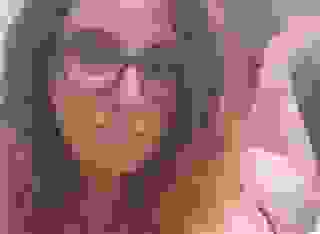- Romance
- Bianhua Ch. 01
Note: You can change font size, font face, and turn on dark mode by clicking the "A" icon tab in the Story Info Box.
You can temporarily switch back to a Classic Literotica® experience during our ongoing public Beta testing. Please consider leaving feedback on issues you experience or suggest improvements.
Click hereA bud begins to develop!
I looked over the lay of the land before me. It was better than it had been described to me in ongoing chats with the Epa. Chris Devereau, one of Epa's upper management team with experience in the industry longer than my years, had been trying to convince me for over three months to get me to look at this place.
It took him quite a while, but he finally wore me down. He had been right. The land was perfect for proving on a large scale that the two microorganisms I had patented would work. He had gotten extremely interested in my microorganisms when a story about them had been published in an insiders ecology magazine.
In his office, we had looked at a few topological maps of the area. What intrigued me was the huge supply of water available to this area. One of the craters at the top of the mountain had water almost to its top collected over years of melting snow.
We went to google maps and got a detailed, closer look at it. It was clear that the water had no natural way to escape to the outside and that it was just a matter of time before it would start spilling over. It was a resource that could help me greatly if we went forward.
If we could blow out a section of its rock rim, we could create a manmade waterfall to provide the steady water supply I would need for both the rotting process and the making of the soil. The only major problem I saw was working out the little difficulties that come with any location to make a smooth operation.
Before driving into the site, I had rented a helicopter for two days to fly me over the lake, the crater, and the overall site. Using a high-definition camera, I took digital images for closer inspection during the evenings. I am glad I did because I discovered a few things that I would have not seen from the ground's point of view.
Part of the mountain's crater had a very thin side with a flat surface that faced the area I was looking at. The crew, supplies, and equipment could be Heli ported in to do the work needed. If opened the way I wanted, it meant the built-up ice on the west side of the crater would receive more sunlight providing an added water supply for years.
The site had three huge flat areas off to the side. Once stripped of its timber they would serve well for what I needed. One would become our soil making area, the second the site for a concrete making operation, and the last the largest a sorting area.
All it had taken to get me to this point was a genetic modification of two microorganisms which allowed me to create two new ones. Since most microorganisms were single-cell it was quite simple. It took three years of diligent research to find a way to make it work. The key had been to change the genetic code of the new microorganisms I had created.
It was now a proven fact thanks to my discovery that when natural rotting was taking place chemicals like arsenic and others that we added to the mixture would be converted into a gas form by these new microorganisms. The key was collecting this gas so it could be burnt off if a certain pattern were followed. The new microorganisms I created by merging the right ones had been proven to be environmentally safe.
I was currently standing about twenty-two miles from an abandoned gold mine that had long ago stopped producing. There was still gold in it, but they had been stopped by the feds because of the trailing's built up over time by mining it. Now with the price with a troy ounce of gold, if it could be reopened it would be a nice security blanket for someone.
That was one of the reasons I was interested in this area. The surrounding mountains were rich in iron ore and would be prime for harvesting. The problem with mining was the same problem that I might be dealing with. That was the safe removal and disposal of the stockpile of contaminants that would be created because of it.
The area I was looking at was the remnants of an extremely large stripped mine that had naturally been reforested by Mother Nature since it was abandoned. Like the gold mine, it was now owned by the state. Once cleared of the marketable forestation it would be a perfect spot to see if my theories would work.
The problem with the gold mine was that the holding ponds were beginning to collapse and the Epa was afraid that the chemicals they contained, because of the size of them would soon start leaking and flow into the river system.
It was not what was in them that bothered them because they were all natural minerals found within the earth, but it was the concentration of them. Because of the density If the problems were not resolved soon, it could kill the river eco-system downstream for years.
Since the ecological system of two countries, Canada and the United States would be affected, they could not afford to wait. Canada was aware of the problem and they had quietly been applying pressure to the Epa for years.
My instructors at university had been amazed when the saw those little things at work in the small tests we did multiple times with them. Using everyday garbage that we all help to make, we added topsoil, the microorganisms, and the dangerous chemicals we wanted to get rid of. We watched through the glass the slow evolution as the waste was consumed and changed. The gas created had burned for sixty-four days before the flame died out.
After taking the new soil out we tested it, searching for the dangerous chemicals we had put in. Not a trace of them could be found. Nor was there any in the carbon dioxide created by the burning of the gas. The process I used I called 'Bianhua' which is the Chinese word for transformation was a proven success.
Twenty-seven times we conducted the same test with different amounts and the results always came back the same. The university brass had been upset that I had patented it because the thought it would be worth billions for them.
During the same time, I had discovered an enzyme that would dissolve most household plastics turning it into a liquid state and that when finishing evaporating, left chalk-like residue. We found the residue was mostly a calcium based compound. The testing of that material proved it did not do any damage to the environment. Both microorganisms would die out naturally when their reason for being no longer existed.
Nobody knew that what I had done had been derived from the principles had been taught to me by my adopted father. His understanding of how mother nature worked was extreme. It was just something they had normally done to deal with the trash they created in their community. It was his actions that inspired the creation of the microorganisms. I took his understanding of Mother Nature and how things worked to find a process to restore what we could in an environmentally safe manner.
It had been simple to put together once I understood that all chemicals were all naturally made and had not been a problem for years until we humans began disrupting the natural cycle of things created by Mother Nature. I produced the process that would, in part, restore the balance to what we had disturbed.
The problem with implementing my invention was that it required space, time, and a steady supply of rotting material to restore what had taken Mother Nature billions of years to mold. It was the rotting process that was the key to making it all work. Rotting caused Mother Nature's natural tools, a group of microorganisms, to absorb the chemicals. I had found a way to convert these invisible microorganisms into a gas which, when collected could be burned.
Since I had just graduated, the Epa wanted to see if I thought my process would work in this isolated location. For the last two weeks, I had been camping in the area getting a deep understanding of the lay of the land, determining what could be salvaged and what had to be modified to come up with a plan to go large scale at this location.
At the end of each day, I would send Chris a progress report with what I had learned. One of the things I pointed out was the lack of normal wildlife. The amount of animal and bird bones around the containment ponds was sickening. With a few adjustments and a lot of prep work, I decided this would be a perfect spot to try my experiments on a large scale.
I had found a few trails that may of being used by dirt bikers, or maybe hikers out for an afternoon walk. For some reason, the gravel road that wove through the surrounding mountains to this location had been kept up. Still, it was going to have to be built up and paved.
To be able to show that my theory and enzymes would work I would have to use man-made garbage on a large scale. The biggest problem in mind would be finding it. I was about a two-hour drive by road to the closest city called Richmond, in Washington State, in the middle of the Rockies. With a population of about fifty thousand what they produced in garbage was a drop in a bucket. The road between the two abandoned mines locations could only be completed by using a four-wheel off-road all-terrain vehicle.
The strip mine was huge and had been built into the sides of two mountains. They had started in a huge circle slowing working their way down until the pocket of mineral deposit was completely tapped out. In doing such they had taken out an equal amount of the side of two mountains. The overgrown road down was wide enough for two huge mine trucks to pass each other.
On the road down they had cleared out and leveled off huge sections, all of which I could use for various parts of my overall plan. It had taken me over two hours to ride my all-terrain vehicle down from the top.
I took out my cellphone and called my contact in the Epa hoping he had not left early because it was a Friday. He answered my call right away.
"Look," I said. "It is doable but it's going to cost a lot of money for the startup. The old strip mine is going to need the regrowth of timber taken out. The road between the gold mine and here needs to be cleared and repaired to allow heavy-duty trucks to move freely back and forth. We are lucky since for now there is not a major natural water flow system in this area for us to be concerned about."
"Once that is done," I said. "The first major dump of garbage must be brought in and sorted out. The upper levels of the strip mine have huge flat areas in which this could be done. We would have to work from one end of this manmade quarry to the other using the man-made flat area for making soil that we would have to layer over the garbage before tankers could begin emptying the contaminated ponds."
"The other problem is that we are going to need as much yard waste as possible. We can blast rock out of the side of the mountain and crush it down to be used to provide a scattered weight when layering over the layers of garbage before toping the section off with the topsoil that we will have to create," I said. "When one holding pond is cleaned out the rock and concrete used to build it could be recycled in with the garbage to allow the microorganisms to work their magic on it. As each section is leveled off with collection pipes buried in them so that the gas produced because of rot could rise to the surface and be safely burnt off."
"After soaking down the newly formed area with the fluids from the holding ponds, I would plant clover into the layers of soil covering it because its nature's natural soil cleaner," I added. "Over time we would slowly fill the strip mine up making an unbelievably valuable flat section of land. By the time we got back to the section in which we had planted the clover, it will have cleaned up a lot of the soil."
"How long would it take to complete the first level," He asked?
"With the size of this old strip mine, a year for the first level which is the smallest at least if we have enough garbage," I said. "As each level is achieved the greater the mass area, we would have to fill in. This could very well be a ten to twenty-year project. The result would be a huge flat area of land prime for redevelopment."
"With the Philippines talking about canceling their agreement to take garbage from the city of New York, is the space big enough to handle half of the garbage they produce for a few years," Chris asked? "Is the rail line into the mine still usable?"
"Yes, to both questions and it could take it all," I responded. "for every cubic foot of garbage, you end up with an eighth of the volume as soil when the cycle is complete. It is going to take a lot of startup money and a two hundred year lease on the land if you think I am the one to do it. The other problem is figuring out how to make it profitable. If I cannot make enough money to cover the overhead, I won't touch it."
"So, you're interested in doing it," Chris said with a chuckle. "I knew you would be the man. Meet me in Olympia Monday morning we will begin to formulate a plan to see if we can put it all together. Too many depend on the river system for us not to. Start thinking of a name for your new company." Chris said. "Between the governor and us, I think we can find the funds between an out and out grant or an interest-free loan to get started."
"Why do you think I would be seriously interested in taking something this big on," I asked?
"First of all, the city of New York pays big dollars for the handling of their garbage which is compressed the same way they do junk cars," He said. "That is after they have taken as much of the recyclables out of it as possible."
I must admit that man had gotten my interest. So, I agreed to meet him to see what he was proposing.
*******
It had been almost three months since the democratic Governor, the Epa and I had finally agreed. I had my two-hundred-year lease on the land. The major funding needed, and a long term contract with the city of New York. The main road into the site was been brought up to date and was now a new concrete road thanks to the state. A logging company was already beginning to remove the timber.
The land leased to me was forty miles long, sixteen miles wide, and they had signed over the mineral rights. That was the hard part of putting the deal together. The Governor was afraid I was going to leave the land in worse condition then I found it. It took Chris a lot of sweet talking to get him to commit. The catch was I would not own the mineral rights outright for up to one year providing they were satisfied with what I was doing.
The outcome was that if it did not get the governor's approval after that first year, I would have to agree to him taking it over and accept receiving a huge annual payment for the use of my system.
The amount of land leased included the strip and gold mine. Starting in the new year the first trainload of garbage would be arriving. A railroad crew was already checking the rail line and making repairs that were needed. The built-in turnaround already existing allowed for the quick movement of trains.
That gave the timber company three months to clear out what they could in the area that we would be starting at. They felt it would take until the end of the year just to clear the trees on what had been the road going down to the bottom of the strip mine. They were clearing the road between the two mines first and making sure it was safe enough for the heavy-duty equipment they would use.
The four rock crushing machines were going to be brought in by helicopter. Once in place, they would make any size of stone required. I would have one of them making a fine crushed stone sand full time. First for the road repair and then to start production of a material I would need to make concrete. I wanted to build a concrete road on the far side of the land under my control. Until then we would have to make do.
The Epa and the governor had decided where they wanted the water to come down from the mountain. They had agreed to build a small hydroelectric generation plant which the water would flow through. Once up and running it would supply enough electricity for about a hundred thousand homes. The amount of water being tapped from the mountain to achieve that would be replaced by an average winters' snowfall.
As the timber company stripped the land, I had crews going in behind them tearing out roots, mulching down anything they could and putting into trucks that would haul it to our soil making area. There, shredders would turn it into a fine mulch. Two other crews were hard at work in the sorting area preparing what was needed for any plastics coming into be transformed.
********
I was out on a Sunday checking our overall progress out when the accident happened. I guess my all-terrain vehicle scared the horse she was riding because I saw it jump up raising its front legs into the air, causing her to be tossed off. She went straight down off the edge down to the next lower section of road about forty-five feet below. The horse bolted running as fast as it could.
I was shocked because of seeing her and the horse was the last thing I expected. The horse was a fully grown mare still in her prime. Just by the look of it, I knew she had been well taken care of.
It took me about twenty minutes to reach her. My first impression was that she was in her mid-teens. She had shoulder-length brown hair, and a soft roundness to her face. The rest of her was unknown because she was dressed in winter clothing. She was out cold. Looking over her general appearance she appeared generally bruised up.
I noticed the bloodstain on her right leg and saw the large pool of blood that was slowly growing. After ripping her blue jeans leg, I saw the long deep gash running almost the full length of her lower leg.
At the moment I was extremely grateful that my adopted father a Chinese monk, had allowed me to watch him when he was working with the faithful to stitch up people and make temporary repairs that would hold until they reached the hospital if it was serious. In most cases, they would come back later to have the stitching taken out. The teaching of his old ways was finally going to be useful.
It brought back memories of working with him has he repaired animals and birds just like he did humans. Those long hours I spent learning how to stich flesh was now going to be a benefit to me.
When I had balked about it my adopted father, the master, had quietly reinforced the thought that there was a reason to what I was learning. It would just take the right time for one to see it.
She had severed a vein. Using secrets taught by the master I touched her body so that if she woke up, while I was working on her in a manner that she would not feel the pain. Finding a small young plant, I trimmed it and cut out the section I needed. I got out my heavy-duty first aid kit. I used the stem from it to replace the part of the vein that was missing and tied the whole thing together so that there would be no further blood loss. Once I had stitched her leg up, I released the restraints I had put on her so her body would respond normally.
I picked up a piece of the plant stem that I had used in slipped it into my shirt pocket figuring that wherever we ended up the doctor would need to know what I had used in the patch up. I knew the plant was safe for humans but knew within hours her body would naturally begin to reject it.
I had lifted her into the passenger side of my four-wheel all-terrain vehicle and was surprised to discover she seemed light as a feather. I had started the drive back to my truck to take her to the hospital. I estimated that she had lost about a pint of blood so I knew that when she woke up, she would be lightheaded.
"Who are you, and what happened," The young lady asked as she started coming around. By this time, we were just about to my Ford 150 truck.
"My name is Dirk Blackstone," I said. "My all-terrain vehicle scared your horse and it threw you. I rode down to you only to discover you passed out and bleeding so I patched you up temporarily so we can get you to the hospital."







